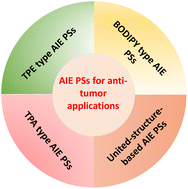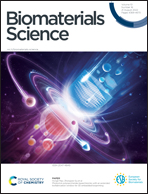Design and structural regulation of AIE photosensitizers for imaging-guided photodynamic anti-tumor application
Abstract
In recent years, photodynamic therapy (PDT) has become one of the important therapeutic methods for treating cancer. Aggregation-induced emission (AIE) photosensitizers (PSs) overcome the aggregation-caused quenching (ACQ) effects of conventional PSs in aggregation or high concentration states, showing enhanced reactive oxygen species (ROS) generating capacity and improved therapeutic efficiency. Meanwhile, connecting different donor and acceptor groups gives the PSs a lower energy level and the absorption/emission of a long wavelength, which makes the PSs produce more ROS and penetrate deeper into the tissue for imaging. As a promising tool for achieving efficient PDT applications, numerous studies have demonstrated the advantages and potential medical applications of AIE PSs in the diagnosis and treatment of various diseases. Herein, we outline the research progress of AIE PSs with different representative structures in fluorescence imaging and photodynamic anti-tumor therapy, and expound the design strategy of the donor-acceptor (D–A) framework for constructing practical AIE PSs in the past three years. Furthermore, this review addresses the underlying challenges and opportunities of AIE PSs in PDT, aiming to grasp the striving directions of the next generation of AIE PSs.

- This article is part of the themed collection: Biomaterials Science Most Popular 2022


 Please wait while we load your content...
Please wait while we load your content...